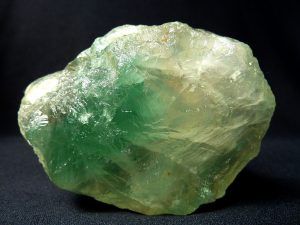Calcium in Plants: [Use, Advantages and Detect Deficiencies]

 Calcium is included in the group of the three most important secondary micronutrients in crops.
Calcium is included in the group of the three most important secondary micronutrients in crops.
Although its role is decisive for the proper development of plants, it is considered secondary because the necessary amount is less than that of the known macronutrients.
Good levels of calcium will ensure that the structure of the plant is better and, therefore, all processes benefit.
But how do you know that a plant is getting enough calcium? Keep reading because here we will answer that question and many more.
What is calcium?
Calcium (Ca) is a nutritional element that plants need in a certain amount.
It is part of the family of micronutrients and is one of the most important, together with sulfur and magnesium.
The calcium absorbed by plants is in the form of calcium pectate, which is available in the soil in a certain amount.
What factors influence crop response to calcium fertilization?
- Environmental conditions play a determining role in the correct absorption of calcium.
- As this is worked through perspiration, the effects that reduce it, such as high humidity and low temperatures, can harm levels.
- And this is true even in rich soils, where a study could safely reveal that calcium levels are appropriate.
- It is also necessary to consider the interaction that calcium has with other nutrients, such as magnesium, sodium and potassium.
- When any of these three are present in very high amounts, calcium absorption may be impaired.
- The acidity of the soil also impairs the availability of calcium for crops to take , so it is necessary to measure it very well.
What is the calcium content in the soil?
Calcium is the most abundant element that exists in the world, being found at a level of 3.64% of the total within the earth’s crust.
According to studies on the matter, for arable land, the average calcium that must be present is 1.64%.
It should not be forgotten that calcium is not only taken by plants from the soil, but also the composition of the water intervenes.
What benefits can a soil rich in calcium have?
Plants that grow in soils rich in calcium have the ability to enjoy a better state of health, since calcium is involved in processes such as:
- Activation of some enzymes.
- Coordination of activities related to the cell theme, especially in what has to do with the protection of the cell membrane, preventing the substances that make life in it from escaping. This is decisive in the formation and union of cell walls.
- It plays a role in the work of plant hormones, so it is involved in both the growth and germination of plants.
- It works in the regulation of the internal metabolism of plants.
- It contributes to the selection of the correct proteins that make it easier to cope with environments with very high temperatures.
What disadvantages does an excess of calcium have?
Excess calcium in crops is one of the rarest of all micronutrient toxicities.
However, it is worth knowing that the biggest problem around this matter is generated by competition with other nutrients.
In particular, calcium can impair the absorption of potassium and magnesium, which are also very important for the health of all plants.
What crops benefit most from the presence of calcium in the soil?
Calcium is especially important in the cultivation of legumes, since its deficit will affect the formation of nodules.
In certain vegetables it is also decisive because its deficiency can cause rotting in tomatoes or peppers, burns in lettuce and black hearts in celery.
In the case of fruit trees, melons are among the crops that most need calcium to develop in a healthy way.
How do we detect deficiency or lack of calcium in our crops?
Calcium has the property of remaining immobile inside plants, as is the case with many other micronutrients.
For this reason, the absorption carried out by the roots of it occurs through transpiration, which is an action that plants carry out naturally.
This means that the calcium is mixed with water, but when it enters the tissues it separates, the calcium goes where it is needed and the water evaporates.
Therefore, when the plant is subjected to high humidity or is in very cold environments, which impair transpiration, a deficit may occur.
This is evidenced in the most important parts of the plant: the fruits and the leaves that are just being born.
Among the main symptoms that demand attention due to calcium deficiency are:
- Roots: the growth of the roots at the correct rate depends, to a large extent, on the amount of calcium that the crops have available. If this is not necessary, it can become a slow process that will make the roots look darker and could even die.
- Leaves: slow growth can also occur in new leaves, also causing deformities and spots. Even, in some cases, points of gelatinous condition can be evidenced.
- Pollen: the correct germination of pollen can also be affected, as well as the development of the pollen tube that is responsible for its transport.
- Diseases: the symptoms of lack of calcium could not become the biggest problem in this whole issue, but the possibility that the plant is more vulnerable to diseases such as rot and burns.
With all these data there is no doubt that calcium is an essential micronutrient for the development of plants.
Therefore, if any symptomatology of all those presented here is presented, it will be urgent to move forward with an assessment of the land to act based on the results.
But, if the correct measures are applied from the beginning, surely there will be no problem.


![Photo of Monstera Care: [Soil, Humidity, Pruning and Problems]](https://www.complete-gardening.com/wp-content/uploads/2022/08/monstera-care-soil-humidity-pruning-and-problems-390x220.jpg)

